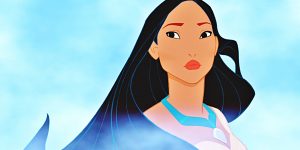The final assignment for my Visual Arts class was based on appropriation. The task was to use appropriated footage and audio to create a 45 second piece of meaningful art.
In my Arts Studies class we'd been discussing Indigenous representation in mainstream media. One example that took me by surprise was Disney's Pocahontas. As a former employee of Disney (which you can read about here) and an avid fan I was all prepared to defend the studio and their film, but after watching some of the scenes out of context, I found some disturbing messages.
Being Métis myself, I felt I was in an awkward place within this conversation. I couldn't fully identify with either of the main characters in the film and I only had my knowledge of history and stories my elders had told me of the oppression they'd experienced to position myself in the conversation.
My goal for the project then became to ask questions: who or what in this narrative is 'savage'? I also wanted to do something to protect this cartoon version of an indigenous woman. Like by splicing and editing this cartoon I could shed some light on her real life of loss and betrayal. If you'd like to learn about the true story of Pocahontas you can read this piece written by the Indian Country Media Network here.
I'm proud of my heritage in a way my grandmother and her mother couldn't be. I hope that this project adds to the discussion of a part of North American history that is only recently being addressed.


This project presented me with a challenge to change my preconceived notions of indigenous representation in the media and offered me an opportunity to add my voice to the conversation. After discussing indigenous representation in my Arts Studies class, what I saw in Disney's Pocahontas was a gross simplification of the effects of colonialism. With this project, I changed the narrative to reflect something truer to history.